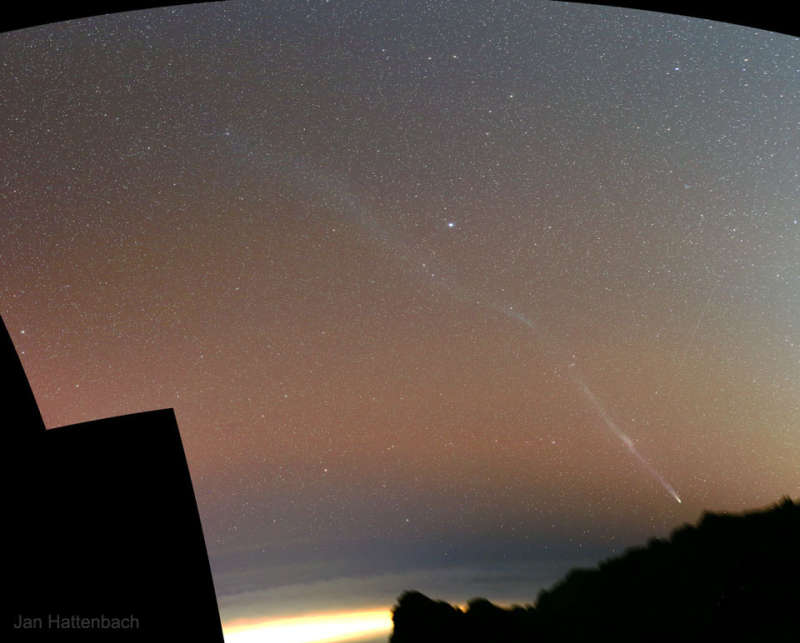Credit & Copyright: Jan Hattenbach
Explanation:
You couldn't see Comet LeonardBs
extremely long tail with a telescope B it was just
too long.
You also couldn't see it with binoculars B still too long.
Or with your eyes -- it was too dim.
Or from a city B the sky was too bright.
But from a dark location with a low horizon B
your camera could.
And still might -- if
the comet survives today's closest encounter with the Sun,
which occurs between the orbits of
Mercury and
Venus.
The featured picture was created from two deep and
wide-angle camera images taken from
La Palma in the
Canary Islands
of Spain late last month.
Afterwards, if it survives, what is left of
Comet Leonard's
nucleus will head out of
our Solar System, never to return.
1999 2000 2001 2002 2003 2004 2005 2006 2007 2008 2009 2010 2011 2012 2013 2014 2015 2016 2017 2018 2019 2020 2021 2022 2023 2024 2025 |
Yanvar' Fevral' Mart Aprel' Mai Iyun' Iyul' Avgust Sentyabr' Oktyabr' Noyabr' Dekabr' |
NASA Web Site Statements, Warnings, and Disclaimers
NASA Official: Jay Norris. Specific rights apply.
A service of: LHEA at NASA / GSFC
& Michigan Tech. U.
|
Publikacii s klyuchevymi slovami:
comet - komety - kometnye hvosty
Publikacii so slovami: comet - komety - kometnye hvosty | |
Sm. takzhe:
Vse publikacii na tu zhe temu >> | |
